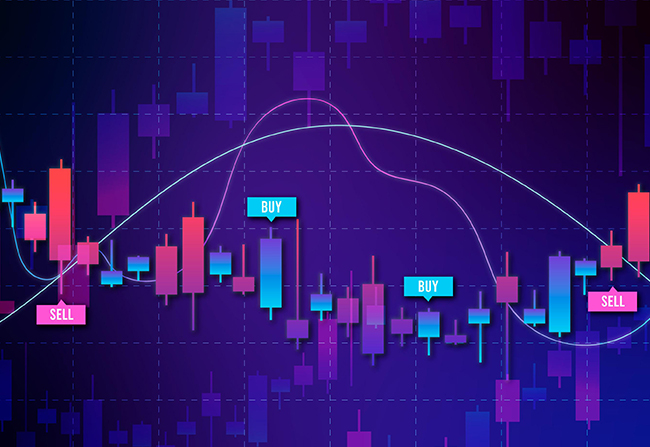
Market indicators play a critical role in the decision-making process for traders. These tools help traders identify potential price movements, trends, and market conditions, which can influence whether they enter or exit a trade. From moving averages to momentum indicators, there are a variety of indicators that traders use to make informed decisions and refine their strategies.
While the use of market indicators can significantly improve your trading decisions, it’s essential to understand how each indicator works and how to incorporate them into your overall strategy. In this article, we’ll explore different types of market indicators, how to use them, and how they can enhance your trading decisions.
What Are Market Indicators?
Market indicators are mathematical calculations based on an asset’s price and volume. These tools provide valuable insights into the market, helping traders identify potential buy and sell signals, trends, volatility, and market momentum. Indicators can be broadly divided into two categories:
- Leading Indicators – These indicators predict future price movements and provide signals before the price actually moves. They are used to anticipate potential reversals or trend continuations.
- Lagging Indicators – These indicators confirm trends after they have already started. While lagging indicators can provide confirmation, they are less helpful in predicting future price movements.
Indicators help traders make data-driven decisions, removing the emotional element from trading. They provide the framework for analyzing price movements, giving traders the confidence to stick to their strategies.
Popular Types of Market Indicators:
Several types of market indicators exist, and each serves a specific purpose in trading. Understanding the most commonly used indicators can help you decide which ones to include in your trading strategy. Here are a few key types:
- Moving Averages (MA)
Moving averages are one of the most widely used indicators in trading. They smooth out price data to create a single flowing line, making it easier to identify the direction of a trend. There are two main types of moving averages:- Simple Moving Average (SMA): This is the average price over a set period of time. For example, a 50-day SMA is the average closing price of the asset over the last 50 days.
- Exponential Moving Average (EMA): This type of moving average gives more weight to recent prices, making it more responsive to price changes.
- Traders use moving averages to identify potential entry and exit points, as well as to spot the overall trend.
- Relative Strength Index (RSI)
The RSI is a momentum oscillator that measures the speed and change of price movements. The RSI ranges from 0 to 100, and readings above 70 are typically seen as overbought, while readings below 30 indicate an oversold condition. Traders use RSI to identify potential reversal points in the market, making it especially useful for spotting market extremes. - Moving Average Convergence Divergence (MACD)
The MACD is a trend-following momentum indicator that shows the relationship between two moving averages of an asset’s price. The MACD line is calculated by subtracting the 26-period EMA from the 12-period EMA. When the MACD line crosses above the signal line, it is considered a bullish signal, and when it crosses below, it is considered a bearish signal.
MACD is often used to identify changes in the strength, direction, momentum, and duration of a trend. - Bollinger Bands
Bollinger Bands consist of a simple moving average (SMA) and two standard deviation lines plotted above and below the SMA. The bands expand and contract based on market volatility. When the market is more volatile, the bands widen; when the market is calmer, the bands contract. Traders use Bollinger Bands to identify overbought or oversold conditions and potential breakout points. - Volume Indicators
Volume is an important aspect of price action. Volume indicators, such as the On-Balance Volume (OBV) or Chaikin Money Flow (CMF), help traders assess the strength of a price move by examining the volume of trades. High volume accompanying a price movement typically confirms the move, while low volume may indicate a lack of conviction.
How to Use Market Indicators Effectively?
Using market indicators effectively requires understanding how each indicator works, what it signals, and how to combine them for a well-rounded analysis. Here are some practical tips for using market indicators in your trading:
Don’t Rely on One Indicator Alone
No single indicator is perfect. It’s essential to use a combination of indicators that complement each other. For example, using a moving average in combination with RSI can help you identify trends and determine whether the market is overbought or oversold. This provides a more comprehensive view of the market.
Consider Multiple Time Frames
Analyzing indicators across different time frames can help you gain a better understanding of the market. For example, you might use a daily chart to identify the primary trend and then switch to an hourly chart to fine-tune your entry and exit points.
Backtest Your Strategy
Before using any indicator in a live trading environment, backtest your strategy to see how it would have performed historically. Backtesting helps you understand how an indicator behaves under different market conditions and allows you to refine your strategy before risking real capital.
Be Mindful of Market Conditions
Different market conditions call for different types of indicators. For example, in a trending market, trend-following indicators like moving averages may work well. In a ranging market, oscillators like RSI or Stochastic can help you spot overbought and oversold conditions. Be sure to adjust your indicators based on the current market environment.
Limitations of Market Indicators:
While market indicators are helpful, they are not foolproof. They have certain limitations, such as:
- Lagging Nature: Many indicators, especially moving averages, are lagging indicators and don’t predict future price movements. They often confirm trends after they’ve started, making them less useful for anticipating market reversals.
- False Signals: Indicators can give false signals, especially in volatile or choppy market conditions. It’s essential to use them in conjunction with other tools and risk management strategies to filter out noise and avoid making trades based on false signals.
Conclusion:
Market indicators are powerful tools that can help traders make informed decisions, identify trends, and manage risk. By understanding how different indicators work and how to combine them effectively, traders can increase their chances of success. However, it’s important to remember that indicators are not foolproof, and they should always be used in conjunction with other analysis tools and sound risk management practices.
Whether you’re using moving averages, RSI, or Bollinger Bands, integrating market indicators into your trading plan can help you make more objective, data-driven decisions. With experience and practice, you can develop a strategy that suits your trading style and enhances your decision-making process.




